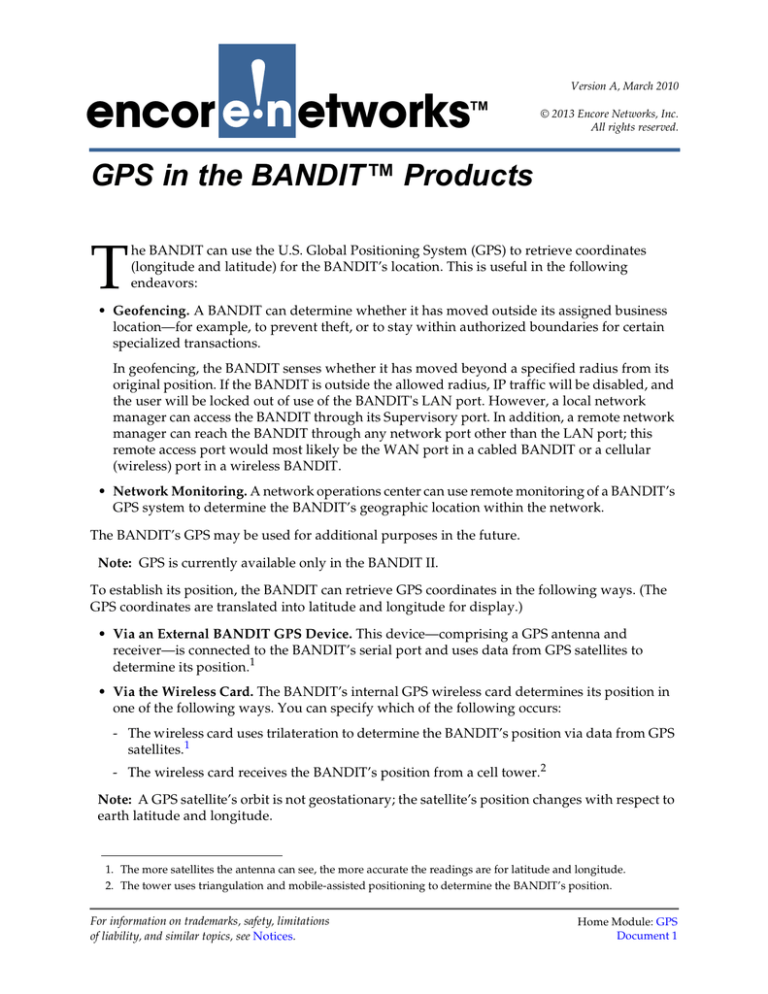
encor e!n etworks
•
TM
Version A, March 2010
© 2013 Encore Networks, Inc.
All rights reserved.
GPS in the BANDIT™ Products
T
he BANDIT can use the U.S. Global Positioning System (GPS) to retrieve coordinates
(longitude and latitude) for the BANDIT’s location. This is useful in the following
endeavors:
• Geofencing. A BANDIT can determine whether it has moved outside its assigned business
location—for example, to prevent theft, or to stay within authorized boundaries for certain
specialized transactions.
In geofencing, the BANDIT senses whether it has moved beyond a specified radius from its
original position. If the BANDIT is outside the allowed radius, IP traffic will be disabled, and
the user will be locked out of use of the BANDIT's LAN port. However, a local network
manager can access the BANDIT through its Supervisory port. In addition, a remote network
manager can reach the BANDIT through any network port other than the LAN port; this
remote access port would most likely be the WAN port in a cabled BANDIT or a cellular
(wireless) port in a wireless BANDIT.
• Network Monitoring. A network operations center can use remote monitoring of a BANDIT’s
GPS system to determine the BANDIT’s geographic location within the network.
The BANDIT’s GPS may be used for additional purposes in the future.
Note: GPS is currently available only in the BANDIT II.
To establish its position, the BANDIT can retrieve GPS coordinates in the following ways. (The
GPS coordinates are translated into latitude and longitude for display.)
• Via an External BANDIT GPS Device. This device—comprising a GPS antenna and
receiver—is connected to the BANDIT’s serial port and uses data from GPS satellites to
determine its position.1
• Via the Wireless Card. The BANDIT’s internal GPS wireless card determines its position in
one of the following ways. You can specify which of the following occurs:
- The wireless card uses trilateration to determine the BANDIT’s position via data from GPS
satellites.1
- The wireless card receives the BANDIT’s position from a cell tower.2
Note: A GPS satellite’s orbit is not geostationary; the satellite’s position changes with respect to
earth latitude and longitude.
1. The more satellites the antenna can see, the more accurate the readings are for latitude and longitude.
2. The tower uses triangulation and mobile-assisted positioning to determine the BANDIT’s position.
For information on trademarks, safety, limitations
of liability, and similar topics, see Notices.
Home Module: GPS
Document 1
Page 2
To use GPS in the BANDIT, see the following:
• Setting Up BANDIT Hardware for GPS
• Configuring the BANDIT’s ELIOS Software for GPS
GPS Module, Document 1






